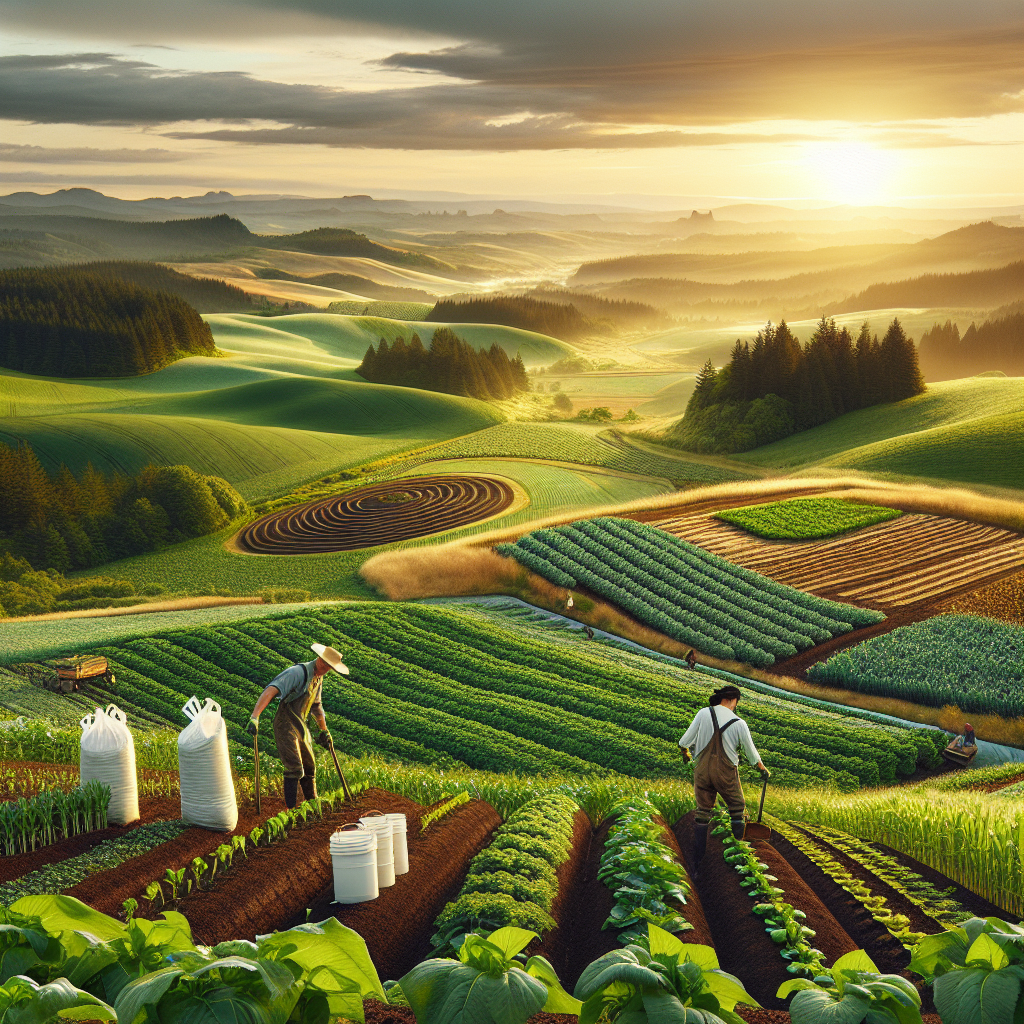Oregon’s Green Revolution: The Rise of Regenerative Farming
West of the Cascades, where the damp, rugged landscapes of Oregon transition into the fertile Willamette Valley, a new farming movement is budding like sprigs of rhubarb in early spring. Regenerative farming – a Portland-chic phrase if there ever was one – is changing how we cultivate our land, and by extension, nourish our community.
Not to be mistaken with the adamant organic farmers huddled around PSU’s Saturday market or the proud traditionalists of Eastern Oregon ranches, the farmers taking up this practice are on a mission more permanent than a single harvest season. Regenerative farming aims to revitalize the soil, promote biodiversity, and believe it or not — save our planet.
The Working Landscape – Pinot Noir to Pasture
Remember how your senses awaken as you traverse the gently winding roads to Oregon wine country? The verdant vineyards of Dundee Hills, where grape clusters cling to the hillsides, soak up the Willamette Valley’s signature misty rain, fill your sight. Driving further, past the silver-sided barns and painted silos of Yamhill and Carlton, you’ll see pastureland. Cows, sheep, and chickens dot the landscapes, but it wasn’t always this way.

These pastures were once crowded, monocropped fields, stripped of nature’s diversity. Today, they’re the demonstration plots for a new agricultural revolution. Several local vineyards, like the Maysara Winery and the Sokol Blosser Winery, have dropped the ‘conventional farming’ shtick altogether. They’re swapping their vintner hats for permaculture thinking caps, incorporating farming methods that improve soil health, foster biodiversity, and sequester carbon. And the backers of this new movement? Well, they’re as diverse as a Corvallis food co-op.
Farming With a Twist – Rooted in Local Community
In the historic agricultural town of Forest Grove, regenerative farming finds its roots in the local community. Hearty Northwest folks run Viridian Farms, a leader in this movement, raising everything from Spanish breeds of livestock to exotic heirloom vegetables, all with a keen focus on revitalizing the land.
Regenerative farmers like these grip onto the lessons of the past and the biodiversity of the indigenous natural environment, infusing it into every square foot of the soil they cultivate. They spend countless, raw-hands-hard-work hours building soil fertility, managing water wisely, and encouraging wildlife habitat. Kind of like craft brewers, but with Mother Nature’s ingredients.
Meet the Multitaskers: Diverse Plants, Happy Soil
Think of regenerative farming like hosting a potluck at Powell’s City of Books – the more diverse your guest list, the better the evening. A variety of plants mediate a rich exchange of nutrients, all while preventing soil degradation and erosion – something as Oregonian as the ubiquitous Black-capped Chickadee.
Farmers are contending with the stubborn Oregon clay soil by planting soil-nurturing crops like clover, buckwheat, and mustard. Ever driven through Tillamook and caught sight of grazing cows amidst a burst of yellow flowers? That’s no happy accident – it’s intentional cover cropping, a core practice of regenerative farming.
Oregon Rains a-Plenty? Farmers Have it Covered
Oregonians know that when it rains, it really rains. Regenerative farming, with its focus on natural water management, makes sure that our generous rain doesn’t become a flood on the farm or a pollutant in our beloved Willamette River. And as Oregon builds up a reputation for more than just craft brews and dreamy coastal getaways – as a hub of regenerative farming – the ripple effects are felt from Sunriver to Hood River and beyond.
So, next time you’re munching on a fresh-off-the-vine Marionberry or slicing into a grass-fed steak from Carman Ranch, consider the hard work and thoughtful methods behind each juicy bite. Perhaps, grab a bottle from a regenerative vineyard and make a toast to Oregon, a leader in transforming our relationship with farming and food.
Here’s to healthier fields, healthier food, and a healthier Oregon – home to an agricultural revolution as nourishing as grandma’s chicken and dumplings after a long day at the Oregon State Fair. As the tide turns, we’re seeing how regenerative farming is not just a fading novelty, but a practice as enduring as the Oregon Trail and as promising as a Bend summer sunset.
Go ahead, let your pioneer spirit soar and explore the fertile, sustainable landscapes of our fair state. Oregon’s regenerative farms are blooming, ready for discovery, and sure to reward your taste buds while keeping Mother Earth in mind. After all, wouldn’t that be quintessentially Oregonian?
